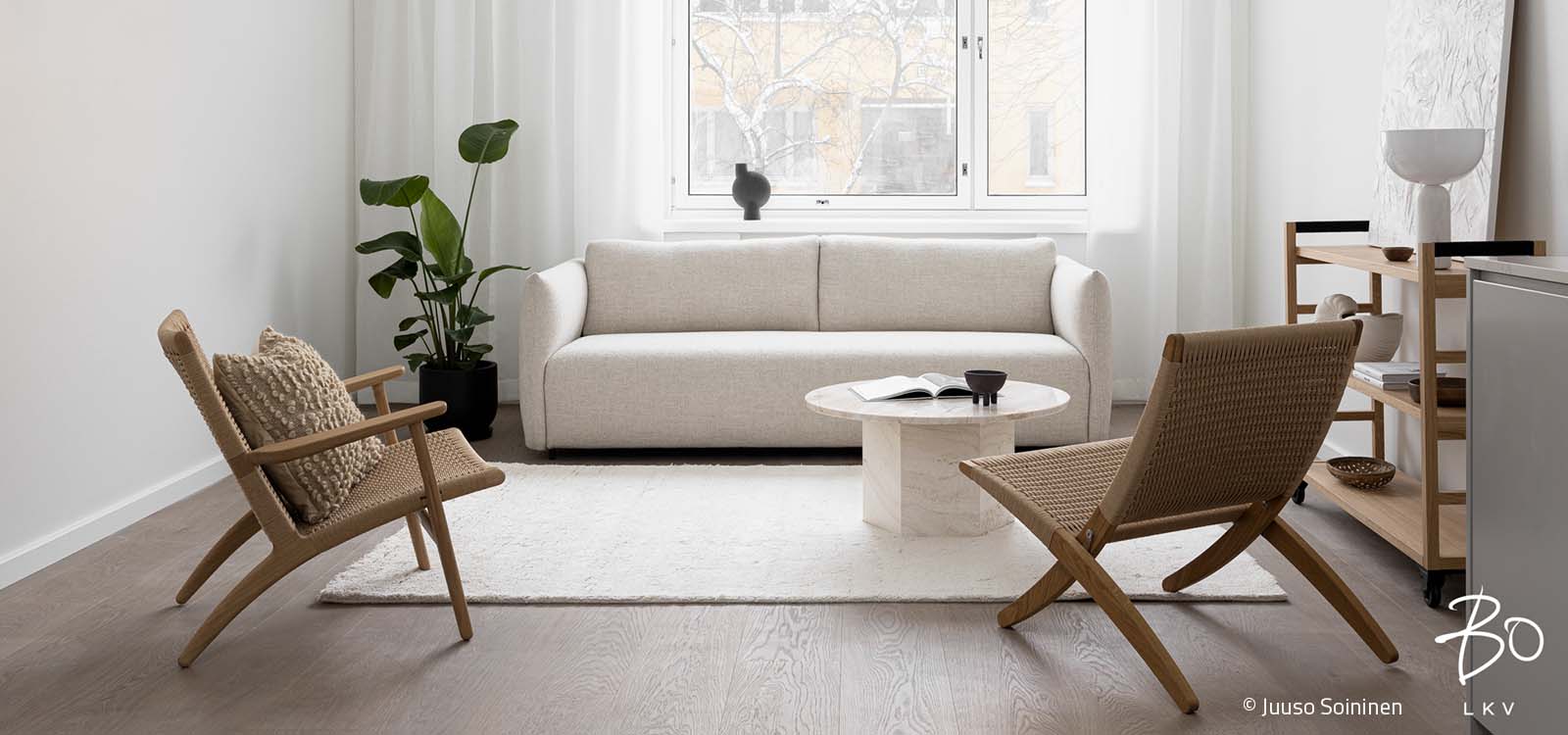Take care of yourself by taking care of the indoor air
The home is not only a place for rest and recovery but, for a growing number of people, also a place of work and productivity. Indoor air has been shown to have an impact on well-being as well as on sleep quality and performance. It is important to invest in indoor air at home, especially now that many people still work remotely and spend most of the day at home. Indoor air quality can be improved in many ways. Painting the walls is one of the latest solutions.
The air we breathe influences everything we do. Indoor air has been shown to have an impact on sleep, performance and productivity as well as general well-being. Indoor air in public buildings and offices is the subject of increasing attention, and indoor air quality is also worth investing in at home. There are many small improvements that can enhance indoor air quality.
Good indoor air smells neutral and is pleasant in terms of both temperature and humidity. Indoor air is often good when you don’t even notice it. This does not, however, mean that bad indoor air is always noticeable to the senses.
“The importance of indoor air quality has been widely recognized in recent years, which is why we at Teknos want to develop convenient solutions for improving indoor air quality at home to support people’s well-being. Our goal is to help people make their homes even better places to spend their time and to recover,” says Petri Sirviö, Technical Manager at Teknos.
SMALL IMPROVEMENTS FOR BETTER INDOOR AIR
Indoor air consists of various gases and particles. Even normal indoor air can include dust, fibers, microbes and various volatile organic compounds (VOC). Improving indoor air means diluting and eliminating impurities in the air.
Ventilation is a crucial factor in improving indoor air quality. Your first step should always be to make sure that your home is properly ventilated. Smells and impurities that come in from the outside – such as pollen, fine particles from traffic emissions and tobacco smoke – have an adverse effect on indoor air quality. With this in mind, you should make sure that the supply air valves or other filtration systems in your home function properly and filter the incoming air. Filters should be kept clean and their condition should be checked at least twice a year.
Other factors with a negative effect on indoor air include temperatures that are too high or too low, dry indoor air and draft. Consequently, you should keep the room temperature and relative humidity at an optimal level and ensure that heat can circulate throughout your home. If people have to wear wool socks in one room and sweat in another room, there may be a problem with air circulation. Cleaning is also significant, even if you are not someone who enjoys it. Vacuum your home and remove dust from surfaces regularly. House plants and air purifiers are also known to improve indoor air quality.
MINIMIZE AIRBORNE CHEMICAL
Indoor air is also affected by compounds that are released from various materials, such as cleaning agents and new furniture. VOCs are examples of such compounds. They are volatile organic compounds that can be released from construction materials, furniture, textiles and cosmetics products, for example. Minimize airborne chemicals by choosing your construction materials, furniture and other household products carefully.
Choose M1-rated products, as they are better for indoor air quality. M1-rated products include low-emission paint products and materials that only release minimal amounts of compounds into the indoor air. The M1 rating is shown on product packaging.
PAINT WALLS TO PURIFY THE AIR
There are also new innovations that reduce impurities in indoor air. Teknos has developed BIORA AIR, a new indoor paint that purifies indoor air by neutralizing compounds such as the volatile organic compound formaldehyde. Formaldehyde is released into the air for example from renovation and construction materials as well as new furniture. Formaldehyde can also be released by household chemicals and textiles. Painting the walls with BIORA AIR allows you to enjoy clean indoor air for a long time: depending on the size of the space and the painted area, the BIORA AIR paint surface remains functional for approximately 5–10 years.
“Paints that purify indoor air represent an entirely new category of products. They are not only excellent interior decoration choices but also help to maintain good indoor air quality. BIORA AIR products are suited for all indoor painting purposes, so you can paint both walls and ceilings with them,” Sirviö explains.
BIORA AIR is also the first choice of interior decorators. The wall paint can be tinted in all of the beautiful colors of the Teknos color chart and they have an attractive matte finish. What would be a better interior decoration solution than one that makes your home look great while improving your comfort and well-being?
TIPS ON HOW TO IMPROVE INDOOR AIR QUALITY
- Improve ventilation and make sure that air and heat circulate well.
- Filter indoor air and keep the filters clean.
- Keep the room temperature and relative humidity at an optimal level.
- Minimize chemicals and choose furniture and other home products carefully.
- Use indoor air cleaning products that reduce airborne contaminants or VOCs such as formaldehyde.
- Avoid smoking indoors and near buildings.
- Use the space correctly. Ensure that cleaning and maintenance is carried out on a regular basis.
- Paint the interior surfaces of your home with Teknos BIORA AIR paints, which purify indoor air by neutralizing compounds such as the harmful VOC formaldehyde.
